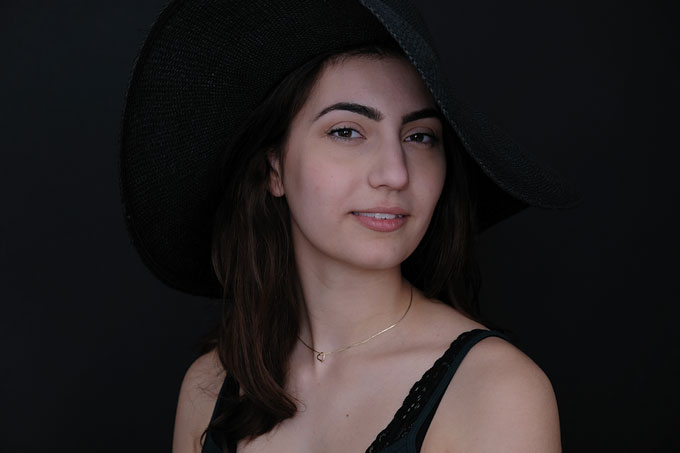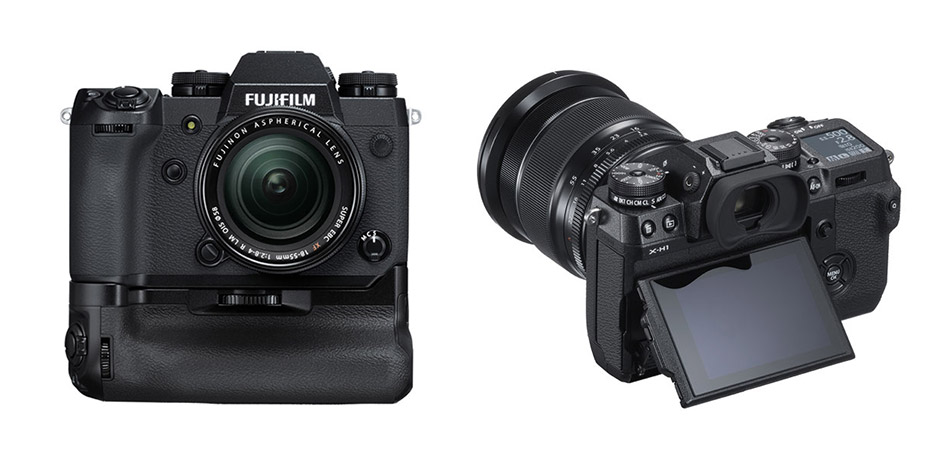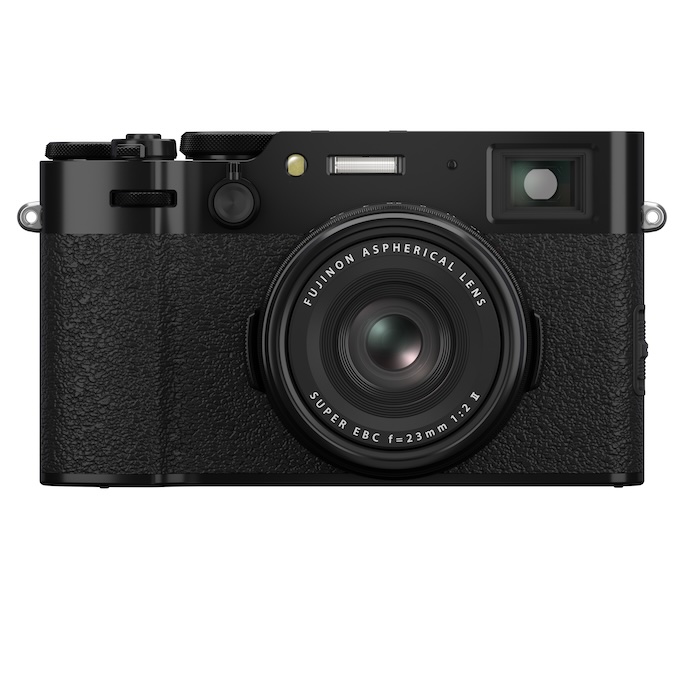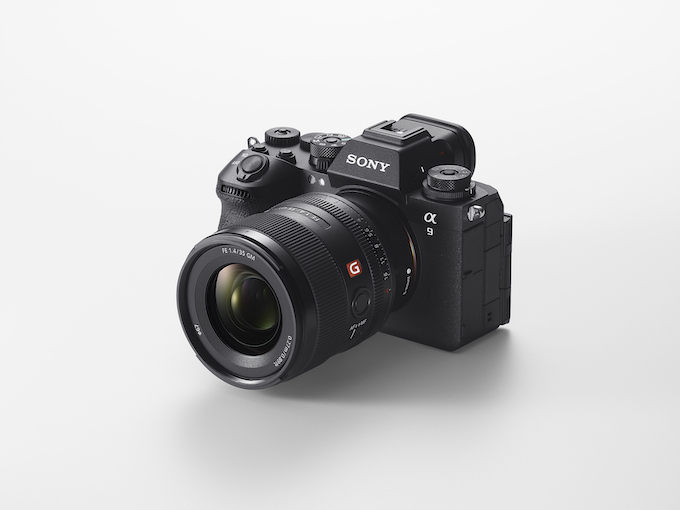Cameras
Taking its rightful place as the flagship model in Fujifilm’s mirrorless X-series camera line, the X-H1 offers a long list of useful features and functions. The first X-series model to include in-camera image stabilization, the X-H1 has also been updated with a leaf-spring switch for the shutter release button, a nearly silent shutter, a new focus level and a new AF-ON button.
Built around a 24-megapixel APS-C-size sensor, the X-H1 is equipped with dual card slots, enough zip for up to 14 fps continuous shooting, Fujifilm’s Film Simulation modes, a 3-inch, three-way tilting LCD screen, and a solid set of video options.
The X-H1 is available for $1,900 for the body or for $2,200 in a kit with a vertical power booster grip. I tested the camera with the Fujinon XF 50-140mm f/2.8 R LM OIS WR and the XF 80mm R LM OIS WR Macro lenses, both with and without the vertical power booster grip.

Fuji’s full complement of X-series lenses includes the 80mm Macro used to capture this close-up flower image. Photo © Theano Nikitas
Image Quality
Given that the X-H1 uses the same X-Trans CMOS III sensor as the XT-2, we weren’t surprised by the new camera’s high-quality output. We shot mostly using the Provia/Standard Film Simulation mode and were very happy with the natural-looking results. Colors were accurately rendered, with smooth transitions. Metering performed well for almost always spot-on exposures, and the camera’s dynamic range was quite good.
The X-H1 offers so many tweaking options that if you’re not satisfied with your images, there are more than enough features to nudge the color, dynamic range or other parameters to your liking.
ISO ranges from a Low setting of 100 to an extended High setting of 25,600. In low light, I felt most comfortable keeping the ISO between 3200 and 6400, where noise levels were kept well under control and details well maintained.
Video quality—especially 4K—is equally as impressive. Advanced users will appreciate the X-H1’s F-log and the new Externa Film simulation mode, which delivers subtler colors while maintaining rich shadow areas. And, the X-H1 offers a couple of slow motion options, too.
Design
Well-built and weather-resistant, the X-H1 measures 5.5 x 3.8 x 3.3 inches and weighs 1.48 pounds (with battery and memory card installed). One of the X-series’ main attractions is its retro-style dials atop the body to set shooting mode, shutter speed and ISO, with sub-dials for choosing video, burst and metering modes.
A deeper grip than the X-T2 provides plenty of real estate, especially for those with larger hands. In place of the exposure compensation dial, Fuji added a useful top LCD panel and placed an EV button, which works in tandem with the rear command dial, to the right of the shutter release. A few other control changes, including AF ON and larger buttons in general, add to the X-H1’s mostly convenient layout.
The tilting LCD screen is touch-sensitive (great for choosing an AF point) and now opens to the side for shooting in Portrait mode. The EVF has been improved, providing a large, bright and clear view.

The camera comes with 16 Film Simulation modes; this portrait was captured using the X-H1’s Provia FSM. Photo © Theano Nikitas
What We liked
Image quality is, perhaps, one of the X-H1’s strongest attributes. Straight out of the camera, JPEGs are impressive in both rendering and detail capture. I’m also a huge fan of Fujifilm’s Film Simulation modes, and the new Eterna cinema film simulation is quite lovely, too.
Image stabilization is effective and works in tandem with lens OIS, and having dual SD card slots is, in my mind, a necessity for a pro-level camera. The camera offers a long list of advanced features for crafting images to whatever look and feel you want. Autofocus is generally fast and accurate; the camera’s continuous shooting is speedy, too. Videographers will find a lot to like about this camera as well.
What We Didn’t Like
I have mixed feelings about the “retro” use of dials for shutter speed and ISO. If you’re coming from a DSLR or most other mirrorless cameras, there’s going to be an adjustment period—initially during testing, I kept forgetting I could set the ISO via a dial. The new sensitive shutter button is a bit too sensitive and, for my taste, a little too soft to the touch.
But perhaps the biggest downside to this camera is battery life. Rated at 310 shots-per-charge, the battery is woefully inadequate. You’ll have to shell out another $330 for the vertical power booster grip to reach 900 shots (using the camera’s battery and two batteries in the grip) and to add another 3 fps to achieve 11 fps with the mechanical shutter. It adds bulk and weight to the X-H1’s already hefty body. You’ll also need the power grip to extend 4K video recording from about 10 minutes to 30 minutes.
How it Compares
Although at $1,600, the X-T2—which uses the same sensor—is less expensive, the updates to the X-H1 are certainly well worth the extra dollars for its more advanced features and updated ergonomics. If you’re video-centric, the X-H1 is a good bet, although you might want to check out the Panasonic GH5 as well. For speed and video—and a lower price ($1400) and much smaller body size—the Sony a6500 may be the perfect match for your needs. And the Olympus OM-D EM1 Mark II, at $1,700, is also a strong contender for still images. If you’d rather go full-frame, be sure to check out the new, $2,000 Sony a7III.
While there’s plenty of competition in the mirrorless market, Fuji has come a long way in this arena. The company’s pro-level X-series cameras have been solid achievers and continue to improve across the board. If you’re in the market for a mirrorless camera with an excellent APS-C-size sensor, the Fujifilm X-H1 should be given serious consideration.
Related: Sony A7R III Review
Fujifilm’s X-H1 Is a Mirrorless Monster
Mirroless Marvels: Great Mirrorless Cameras You Can Buy Today





